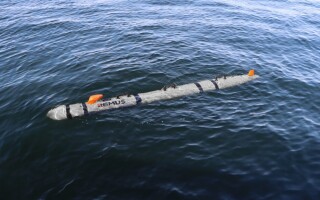Optical fiber connectivity for rugged, embedded systems
StorySeptember 25, 2008
Optical fiber is the transmission medium of choice for many military and aerospace applications because of its immunity to EMI, its lack of detectable electromagnetic emissions, its lower weight than copper cabling, and its ability to transmit high-speed signals over greater distances than equivalent copper connections.
This makes it ideal for use as a secure, reliable intra-platform bus (Ethernet or Fibre Channel) or for the long-distance transmission of ultra-secure data. It has been widely adopted in commercial applications and also in less rugged military systems such as Naval combat systems and many fixed C4I installations such as battle command and air defense systems. However, the more widespread adoption of optical fiber within rugged, embedded applications has been inhibited by its incompatibility with some established embedded computing equipment, such as VMEbus and CompactPCI, resulting in suboptimal connectivity solutions.
The most rugged embedded computing applications are to be found in avionics (combat aircraft, helicopters, and missiles) and ground vehicles (tracked and wheeled armored vehicles). These two application spaces have similar requirements for packaging wherein space, weight, and power are at a premium plus conduction cooling is required to withstand the harsh environment. The military avionics market has seen the widespread adoption of the ARINC 404A ATR chassis standard, providing an ideal package size for 3U and 6U VME, CompactPCI, and VPX-based products. Maintenance procedures encourage backplane-only interconnection of modules within a chassis to prevent damage to loose cables and to prevent signals from incorrect rerouting after maintenance. Newer platforms are being designed for 2 level maintenance with Line Replaceable Modules (LRMs), which, while not constrained by ATR's limited dimensions, still cannot tolerate loose cables being plugged into the front panels.
Many interconnect solutions exist for optical fiber connection through a module's front panel. These are in widespread use in telecommunications and commercial applications. There are also many military specification (MIL-C-38999 type) optical panel connectors that can be fitted to the front of ATR boxes. However, none of these were designed for backplane connectivity in such a limited envelope space. An effective optical backplane connector must engage and disengage without the use of special tools or locking/unlocking devices, must provide very accurate alignment of fibers, and must work reliably in high-vibration military environments. Finally, in the confined space of an ATR box, the fibers must be routed from the rear of the backplane to their point of external connection without exceeding their minimum bend radius so as to not compromise signal or physical integrity of the fiber.
In order to resolve these issues and to provide a set of backplane standards for use with VPX, industry leaders, including Curtiss-Wright Controls Embedded Computing (CWCEC), are proposing a new standard, designated VITA 46.12. The standard is based on off-the-shelf fiber connector types that could be integrated with existing VPX backplane and module specifications. Three connector types, each with multiple independent vendors, are being evaluated:
- Mechanical Transfer (MT) - The MT type uses a self-aligning pair of mating shells and pins to maintain positional accuracy of fibers in the form of a ribbon cable. MT is an established commercial standard offering high connection density, but it needs care to maintain cleanliness and does not provide specific alignment of individual fibers. Figure 1 illustrates the concept of using an MT connector between a VPX module and backplane.
- Expanded Beam (EB) - This uses a spherical lens at the end of each fiber to expand the beam to many times its size. Connection is made by bringing the two lenses into close proximity without physical contact. EB connectors are less sensitive to alignment or contamination and can tolerate many mating cycles without degradation.
- LuxCis-type of connectors designed for ARINC 801 aerospace applications - These consist of metal shell pairs containing multiple signal connections using ceramic ferrules for fiber alignment, maintaining positional accuracy in high-vibration environments.
Figure 1
(Click graphic to zoom by 2.3x)
Fiber connectivity through the backplane has been an omission from embedded computing standards for too long. VITA 46.12 is supported by a broadly based industry working group of board vendors, end users, and connector vendors. It aims to develop a set of optimal connector choices based on established types supported by the results of further environmental testing. The VPX (VITA 46) standard is already proving a worthy successor to VMEbus,
demonstrating its leadership by providing the first rugged, embedded computing standard for the practical use of fiber through the backplane.
To learn more, e-mail John at [email protected].







